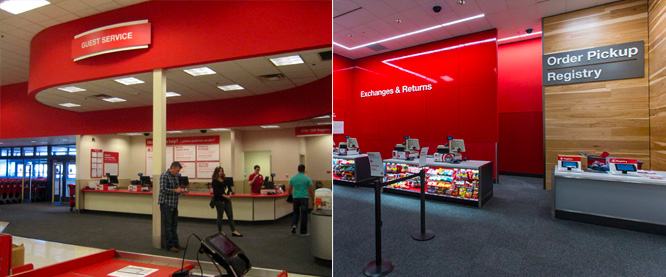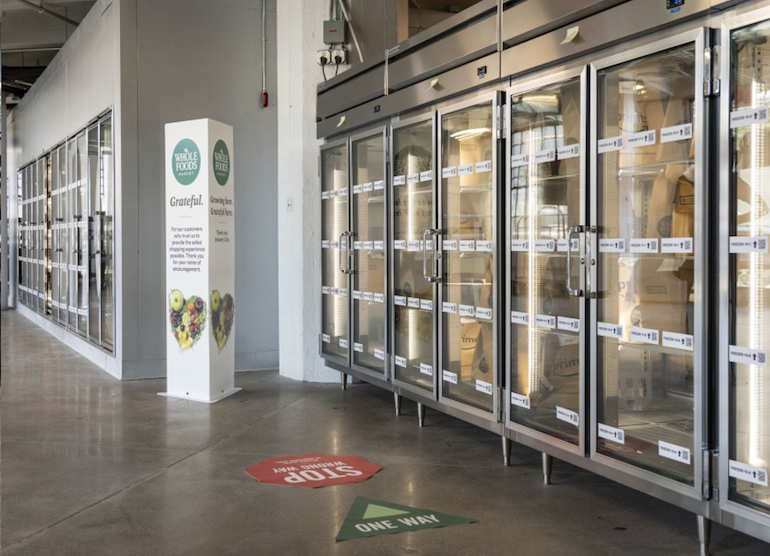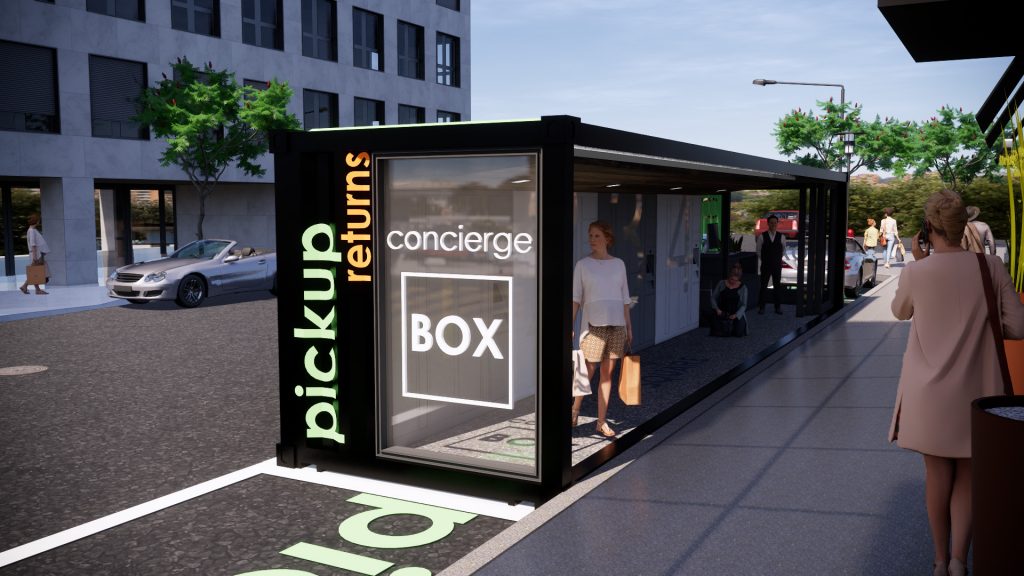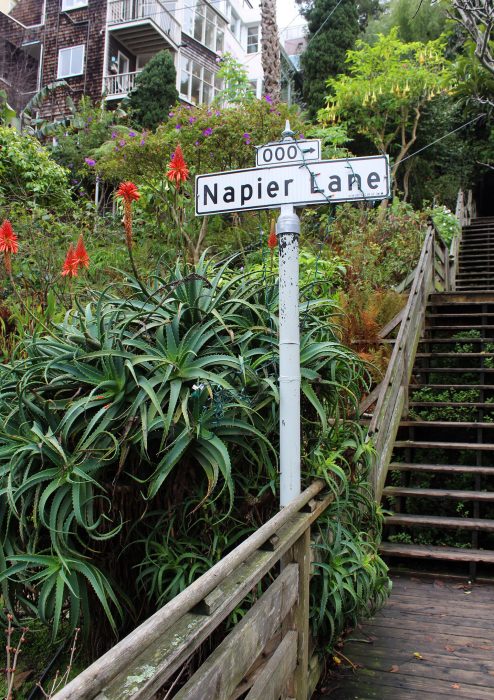Commercial Construction & Renovation: NELSON new Senior Director of Brand Marketing
On the heels of elevating brand and creative to a c-level position with the promotion of Bevan Bloemendaal, Chief Brand and Creative Officer, award-winning architecture, design, and strategy firm NELSON Worldwide welcomes Amanda M. Smith as Senior Director of Brand Marketing. Based in Chicago, Amanda will develop and execute a holistic marketing strategy that builds awareness for the NELSON Worldwide brand.
Read more with Commercial Construction & Renovation here.
Ground Breaks For New Bearings Bike Shop
Yankee Candle Unveils New “World of Home Fragrance” Retail Concept
Retail Revised: Dedicated Convenience
In-store retail is back, but with its return, there is no doubt that the way we shop, or want to shop, has changed forever. With the growth of e-commerce and the adoption of new shopping habits, retailers must act fast to create modern, in-store experiences that complement their digital presence while differentiating their offering from the saturated retail market.
Whether it’s online or in-store, revised retail strategies are crucial for brands as consumer behavior evolves. The stores of tomorrow must serve a purpose beyond that of the pure sales opportunity and transform into a destination where service, convenience, and discovery take place. In our latest ‘Retail Revised’ series we’ll be discussing key themes retailers must consider to enhance their in-store experience. This week, we discussing key opportunities in providing more convenience:
With the rapid growth of e-commerce, convenience has taken on new meaning as customers expect brands to provide services that help to streamline their busy lives and save time. Retailers must quickly adapt and identify how their shopping experience can support this desire. Whether it’s offering more clear and dedicated operations for fulfillment or creating new concepts to get closer to consumers, there are many clever and valuable ways to enhance convenience in shopping environments.
When activating these opportunities, there are key principles to consider:
- Identify underutilized space OR consider non-customer-facing real estate options
- Provide designated support and empower your employees with the right tools
- Keep disruption of parking lots and in-store browsing zones to a minimum
- Create an integrated customer journey with added communication and tech
- Remember your brand purpose
And here are a few brands that are providing highly convenient services and environments:
Target’s “New Glow”
Target just revealed a new, multi-year “glow up” plan to renovate existing locations to improve the shopping experience both in-store and online. The remodel involves creating a designated and expanded area for in-store pick-up, return, and registry operations to better accommodate customers and reduce confusion in the traditional one-lane customer service areas the stores previously feature. Wider isles are also part of the plan to create more space for in-store shoppers and employees fulfilling online orders.

Photo: Target
Whole Foods Dark Store
Whole Foods Market has opened its first online-only store located in Brooklyn, NY. Referred to as a “dark store,” the miniature warehouse-like space will fulfill delivery orders only and help Whole Foods better meet rising customer demand for grocery delivery service. Here, online orders can be packed for pickup or delivery.

Photo: Whole Foods
NELSON Click-and-Collect Concepts
Adjusting to safety demands and new consumer behaviors, NELSON Worldwide explored the idea of creative click-and-collect concepts that could serve retailers and mixed-use developments. The Concierge Box is a mobile pop-up concept that can be placed outside of the traditional store to get closer to consumers or move pick-up services away from merchandise zones. Check out more of these concepts here.

Photo: NELSON Worldwide
The overall goal is to make purchasing easy enough that shoppers keep coming back for more, but brands must be strategic about how they approach these strategies. A demand lies in safe and convenient options, but tomorrow that may change and these concepts must be flexible enough to evolve with the consumer.
Tricentis
TPA Group plans new 120,000-square-foot building at its Alpharetta ‘360 Tech Village’
Hotel Executive: Hotel Design Trends – Looking Into The New Year
In a recent article with Hotel Executive, teammate Cheryl Smith shared how travelers can expect to see more changes in design as hoteliers look to streamline hotel operations and create memorable experiences for guests. Read the full article here.
Urban Oasis
Tucked within San Francisco’s charming Telegraph Hill neighborhood and just below the iconic Coit Tower are a series of hidden steps that are truly worth the climb. Dating back to the 1900’s, the Filbert and Greenwich Steps weave past some of the city’s oldest houses and best-kept secret gardens (with plenty of history). A combination of wood, metal and brick segments of the stairs meander up through the steep hillside, surrounded by charming architecture and lush gardens (even in January), all inaccessible by car. Going up the Filbert Steps leads you to Coit Tower with 360 degree views of the city. Taking the Greenwich Steps back down towards the Embarcadero, you will quickly hear, then eventually see, the wild parrots of Telegraph Hill. This flock of tropical birds is a delightful surprise and only adds to the wanderlust of this true urban oasis. Climbing and descending over 800 steps, this architectural feat may not be easy, but you’ll find plenty of reasons to stop and take in the view, while you catch your breath.


In Memoriam Of The Traditional Headquarters
Let’s hold a moment of silence for the traditional headquarters space. Born in at the turn of the 20th Century, the headquarters life came to an end after battling to survive in a millennial-driven, technology dominated, flexible workplace environment. Prior to the first technology boom in the late 1990’s and early 2000’s, it was rare to find a fortune 500 company that didn’t have an elaborate and sprawling campus that served as the organization’s corporate headquarters. Housed within these walls were generally all of the administration functions of the business including, marketing, human resources, IT and C-Suite executives. Today, however, thanks to the rising use of technology and remote locations, headquarters are irrelevant. In fact, they’re dead.
“Headquarters can be wherever you want and need them to be. In the past, the headquarters used to be the place where ideas were bred and new talent wanted to be. Now, companies are discovering that if you want the best talent, go to where they are,” said Larry Mufson, Managing Principal of The Mufson Partnership, A NELSON Company.
What’s driving this change? Costs and Millennials. The financial crisis of 2008 forced many companies to look at one of their largest expenses, real estate. In order to cut costs and keep relatively the same amount of productivity, many companies downsized their headquarters and larger hub offices and increased the utilization of remote and telework locations. For millennials looking to control when and how they work, the rise of on-demand services like Uber and Hourly Nerd provided the flexibility they needed without being tied to a specific location.
Headquarters spaces are now a costly investment that aren’t yielding the returns they once did. They are no longer a final destination, but a journey that propels a company’s culture forward and flows to the rest of the organization and locations.
Companies such as The Tie Bar are embracing the “headless” headquarters movement. Located in Chicago, IL, the online men’s retail shop wanted to bring their online personality and inventory into a physical environment while also providing a space for employees to work. Their final design solution reflected their upscale urban gentlemen’s club persona, provided space for product and samples, and also offered space for their employees to work, meet and socialize.
Multi-national companies such as NELSON have also embraced headless headquarters. We have 25 locations across the U.S., but none of them are the headquarters.
“Our people make our organization outstanding and prominent, not a location. Within each location, we’ve empowered the individuals there to embody and reflect the mission, values and culture overall. Headquarters for us is an attitude and mindset that is reflected at every level of the organization. What good is a major physical location that is overly grand and opulent if the same values and culture aren’t reflected in other locations?” Said John “Ozzie” NELSON, Chairman and CEO of NELSON.
As the way we work continues to evolve and change, so will the office spaces we inhabit. The headquarters was once the crowning achievement of an organization and a testament to its growth and influence. Today, we bury the space and in a way the idea behind it, but welcome in its place a headquarters that’s available wherever you need it to be.
Teammate Spotlight: Meet Sean McCorry
Meet Sean McCorry, Vice President, National Business Leader in the Retail Practice and National Business Leader in the Hospitality Practice at NELSON Worldwide. Sean will lead the firm’s retail efforts nationwide, bringing over 25 years of experience managing global retail concepts and delivering premium brand concepts with a return on investment.
Q: If you had 3 words to describe your brand, what would they be?
Original, Reactive, Empathetic
Q: Where did you grow up?
I grew up in a town in England call Bristol, and its still one of my favorite places. It’s a big city that never really feels big, incredible eclectic mix of people and the best coffee shops anywhere.
Q: What is a quote or mantra you live by?
“What you allow is what will continue.”
Q: What is an underrated food that you think deserves more hype?
Hot Pot! It’s wild food and I love it!!

“NELSON Worldwide will allow me to mentor creative designers and align on their conceptual thinking, ensuring their projects are brought to life in an authentic and brand-relevant manner.” – Sean McCorry